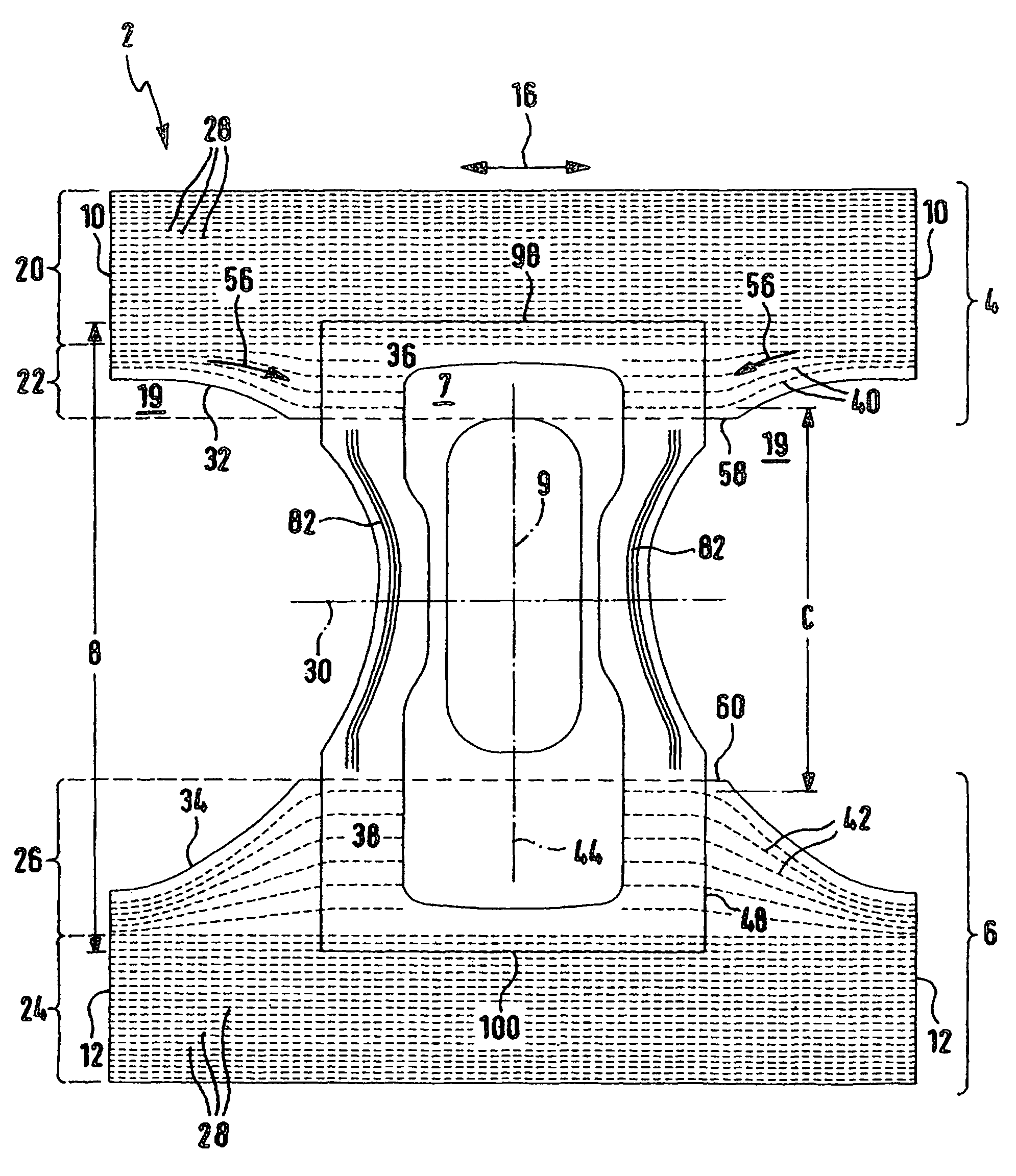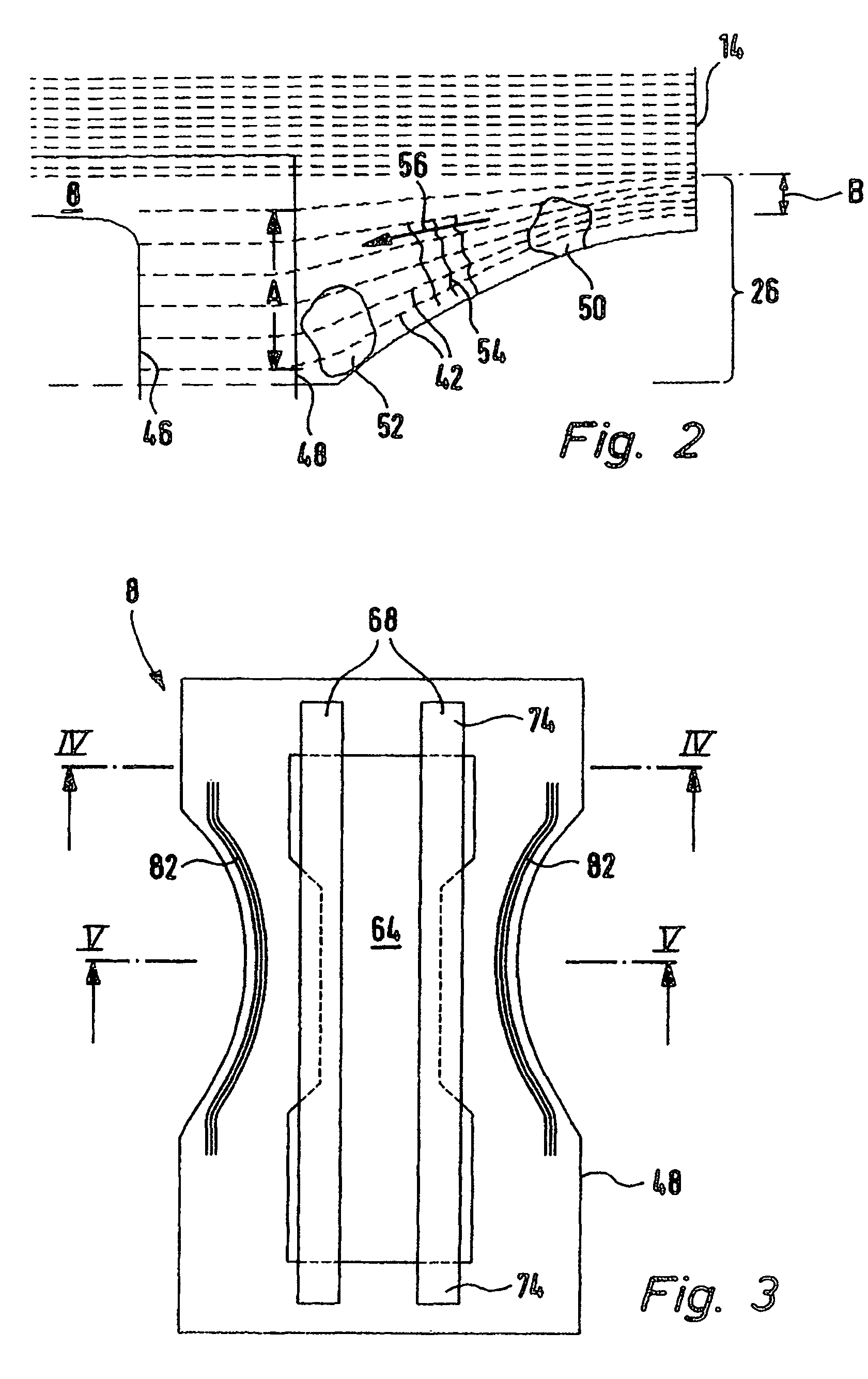Incontinence article in the form of pants
a technology of incontinence and article, applied in the field of incontinence article in the form of pants, can solve the problems of negative affecting the intended absorption behavior, and achieve the effects of improving the wear comfort of incontinence articles, restoring force, and improving wear comfor
- Summary
- Abstract
- Description
- Claims
- Application Information
AI Technical Summary
Benefits of technology
Problems solved by technology
Method used
Image
Examples
Embodiment Construction
[0060]The figures show an incontinence article in the form of pants, which is designated in total by reference numeral 2, for receiving solid and liquid body excrements. The incontinence article 2 is formed from three components which can be largely independently produced, i.e. a front belly section 4, a rear back section 6, and a crotch section 8 which is disposed therebetween and comprises an absorbent body 7, wherein the crotch section 8 overlaps a substantial surface portion of the belly section 4 and also of the back section 6, and is permanently connected in the overlapping area during production. As can be gathered from FIG. 1, this yields an H-shaped basic structure of the incontinence article with a longitudinal direction 9. The joined components (FIG. 1) are then also connected to each other at the respective lateral longitudinal edge sections 10, 12 of the belly section 4 and the back section 6 during production in order to form the pants shape (schematically shown in FIG...
PUM
 Login to View More
Login to View More Abstract
Description
Claims
Application Information
 Login to View More
Login to View More - R&D
- Intellectual Property
- Life Sciences
- Materials
- Tech Scout
- Unparalleled Data Quality
- Higher Quality Content
- 60% Fewer Hallucinations
Browse by: Latest US Patents, China's latest patents, Technical Efficacy Thesaurus, Application Domain, Technology Topic, Popular Technical Reports.
© 2025 PatSnap. All rights reserved.Legal|Privacy policy|Modern Slavery Act Transparency Statement|Sitemap|About US| Contact US: help@patsnap.com



